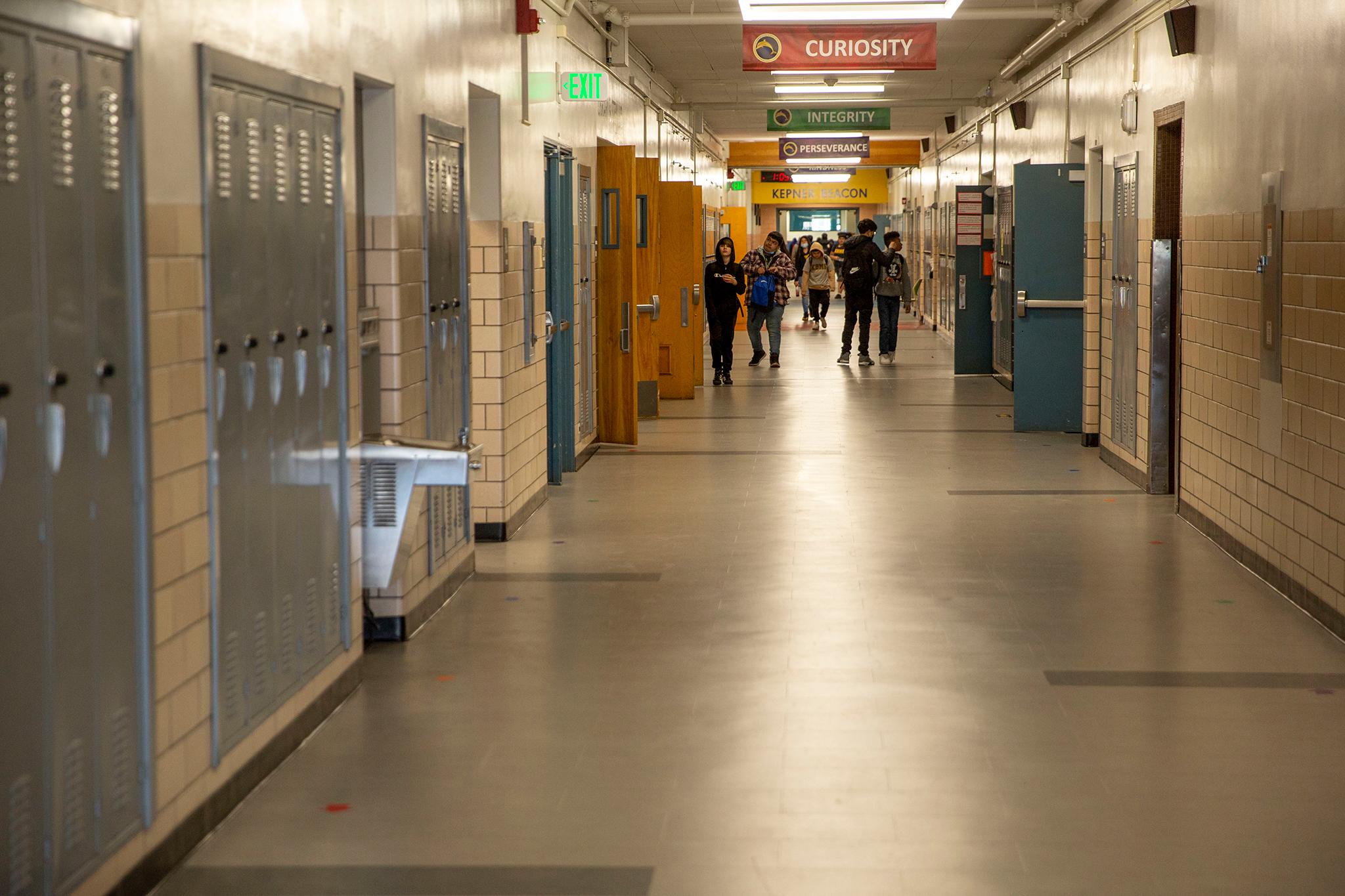
By Marianne Goodland, Colorado Independent
One seat. That’s all that separates the Democrat Party from control of the Colorado Senate.
It’s all going to come down to what it always comes down to: turnout and a lot of money.
Colorado’s state Senate is balanced on the brink between Democratic and Republican control, with Republicans holding a one-seat advantage in the 35-seat Senate. Democrats already have the House (and are likely to maintain their grip). Democratic control of the Senate, as well as the governorship, would clear the path for legislation that has run into GOP roadblocks.
The last two years of split control has led to stalemates over issues such as priorities in the state budget, education (including funding), transportation, health care and Medicaid, abortion, gun control, climate change, and whether to exempt from state spending limits millions of dollars per year in fees that hospitals pay the state to help cover healthcare costs.
In order for Democrats to take control of the Senate, however, they will have to “run the table,” according to John Straayer, a political science professor at Colorado State University who is a long-time observer of the General Assembly and who has authored two books on the Colorado Legislature.
Eighteen of the 35 Senate seats are up for election this year. But only four are considered competitive, and to “run the table,” as Straayer puts it, Democrats will have to win at least three of those four. That means hanging on to two open seats being vacated by term-limited Democrats, and winning at least one of the two competitive seats currently held by Republicans.
Republicans won control of the Senate just two years ago after being shut out for a decade. The seat that tipped the balance? The Jefferson County district won by Sen. Laura Woods of Westminster, now in a hard-fought race to keep her seat.
Turnout was the big story in 2014. Too many Democrats stayed home. Out of more than two million votes cast, Republicans turned in 112,000 more ballots than Democrats. Republicans also held an advantage in voter registration over Democrats, an advantage they had held for about three decades. The GOP also held a strong advantage in ballot returns from the first day of counting to the last.
But this year, it’s a whole new ballgame. Beginning in October, Democrats took the lead in active voter registration and built on it for November. Ballot returns also have so far favored Democrats. With more than 1 million votes turned in, as of Thursday, Democrats held a 14,000-ballot advantage.
In what has become the norm, unaffiliated voters are the prize that each party covets.
Unaffiliated voters have been the largest group of voters in the state for at least the past two years, and that’s true again this year. In the most competitive Senate districts, unaffiliated voters outnumber both Democrats and Republicans.
The four battleground districts lie in Centennial, western Arapahoe, eastern Adams and northern Jefferson counties. In all four races, Democratic candidates have outraised and outspent their Republican opponents.
Outside money has played huge roles in these contests. More than $5 million has been spent by just two outside groups: the Democratic-leaning Colorado Citizens’ Alliance, which has spent more than $3 million to oppose Republican candidates; and the Republican-leaning Colorado Citizens for Accountable Government, which has put down more than $2 million to target Democrats.
The races
SD 19: North Jefferson County, Arvada, Westminster
Incumbent Sen. Woods, one of the most conservative Republican legislators in the state, is seen as vulnerable. This race is a rematch between Woods and her 2014 opponent, then-incumbent state Sen. Rachel Zenzinger of Arvada, and it has been the most expensive campaign in the state — and the ugliest.
Zenzinger is leading in the fundraising battle, with $249,549 raised as of Oct.26. Woods has brought in $192,320, with her biggest donations coming from Republican Party committees, to the tune of more than $25,000. The Colorado Democratic Party has been Zenzinger’s biggest donor, with more than $37,000 in cash and in-kind contributions.
What makes the race interesting? Zenzinger has been the target of false advertising by Colorado Citizens for Accountable Government, which sent out two mailers that said she had voted to spend taxpayer money for a trip to China while she was on the Arvada City County. Zenzinger had voted against using taxpayer money and never made the trip. She has filed a complaint with the Jefferson County District Attorney over those mailers.
Woods received a death threat in September from an area resident, who was later arrested. She has been targeted for her support of Republican presidential nominee Donald Trump, whom she introduced at a rally in Jefferson County last Saturday.
As former state GOP Chair Ryan Call sees it, Woods has been too conservative for her district, and pointed to the recall of three conservative members of the Jefferson County Board of Education a year ago as a portend of where the county is headed politically. Ballot turnout and voter registration in Jefferson County also favor Democrats, he said.
SD 25: Eastern Adams County, Brighton, Aurora
Term-limited Republican Rep. Kevin Priola of Henderson is battling Democrat and former Rep. Jenise May of Aurora for an open seat.
May recently took the lead in fundraising, with $189,321 in contributions. Priola has received $14,266, which includes $11,000 transferred from his House campaign account.
This race has seen the biggest spending in the state by the two outside groups. Colorado Citizens’ Alliance has so far put more than $1.1 million into ads blasting Priola for his stand on paid family leave, how he spends campaign finance money and his contributions from special interests.
May has been targeted, too, by Colorado Citizens for Accountable Government, with about $300,000 in TV ads and mailers.
What makes this race interesting? Call believes this race will determine control of the state Senate. He also believes that Priola has the edge. Priola has been working the district for months, going door to door and connecting with voters on a personal level, Call said. Unlike other Republican candidates, Priola “has demonstrated a unique ability to win over unaffiliated voters,” even those who tend to vote for Democrats.
SD 26: Western Arapahoe County, southeastern Jefferson County, Littleton
The contest is between term-limited Democratic Rep. Daniel Kagan of Cherry Hills Village and Arapahoe County Commissioner and Republican Nancy Doty of Littleton. In this district, both voter registration and ballot turnouts have so far favored Kagan.
Like virtually every Democrat in competitive Senate races, Kagan leads his Republican opponent in fundraising. He’s raised $247,044 as of Oct. 26; Doty has brought in $198,815.
The same outside groups have also targeted Doty and Kagan, but are spending less here.
Call believes Doty is in trouble, in part because of the shift in voter registration toward Democrats in Jefferson County.
What makes the race interesting? Doty has been coy about whether she plans to vote for Republican presidential nominee Donald Trump, telling the Aurora Sentinel in October it was a “private decision.”
SD 27: Centennial
Incumbent Republican Sen. Jack Tate, who was just appointed to his seat last December, is fending off a challenge from Democrat Tom Sullivan, the father of one of the victims in the 2012 Aurora theater shooting.
Sullivan has taken the lead in fundraising, with $158,572 to Tate’s $115,614, as of Oct. 26.
Tate’s biggest donors have been health insurance and medical groups, with more than $16,000 in contributions. The state Democratic Party is Sullivan’s biggest donor, kicking in more than $18,000.
But voter registration favors Tate in this race. “Absent a massive fallout in turnout as a result of the top of the ticket, Tate should be able to hold onto his seat,” Call said.
What makes this race interesting? That a Democrat even has a shot at winning it.
Straayer told The Colorado Independent that the big question will be whether there is a turnout surprise in Colorado that affects the ticket from top to bottom.
The other question on turnout is whether there will be a Republican surge in ballot returns as Election Day nears. That could affect every race, all the way down to the end of the ballot, he said, and Republicans are starting to catch up.
But control of the Senate also will boil down to the candidates themselves, Straayer said. That includes the quality of the candidates, how hard they work and how much money they raise.
Political consultant Ellen Dumm, who advises Democratic-leaning groups, said that past history shows that turnout from Democrats and unaffiliated voters is higher in presidential years. She also believes that Democrats could take the Senate, because, she argues, Republicans tried to push their agenda a little too hard.
“They’ve taken some pretty out-there positions” on some issues, she said, listing the hospital provider fee, as well as education and higher education funding. Those stalemates “have made them look like obstructionists.”












